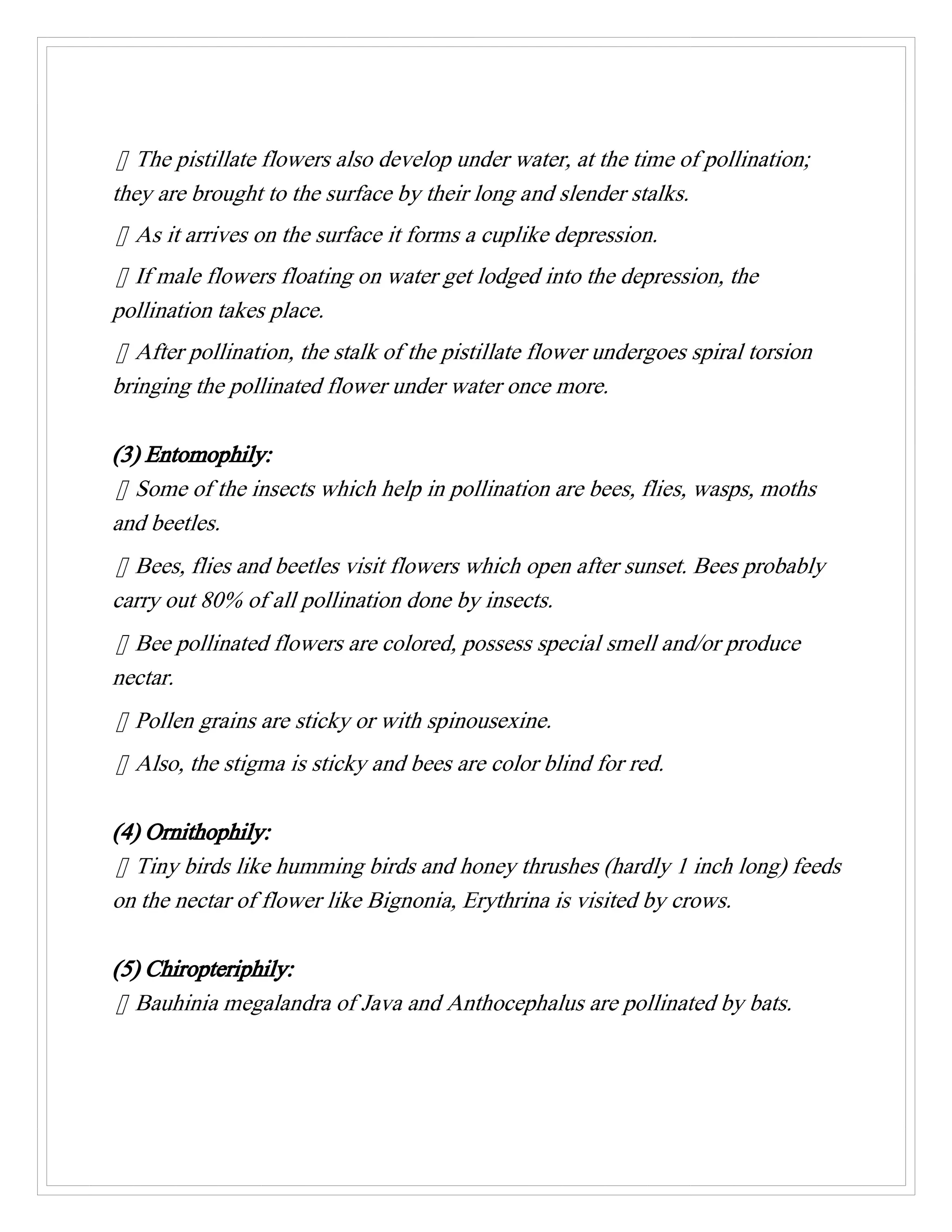This document provides an overview of plant pollination. It begins with an introduction to pollination and its importance in plant reproduction. It then describes the process of pollination including the germination of pollen and growth of pollen tubes. The document outlines different types of pollination based on pollen source and pollinating agent including self-pollination, cross-pollination, abiotic pollination involving wind and water, and biotic pollination involving insects, birds, and bats. Mechanisms of pollination such as pollen vectors and syndromes are also discussed. The conclusion emphasizes the economic importance of pollination.





















